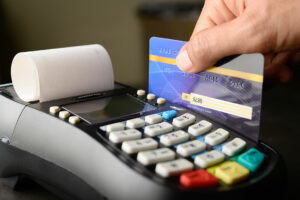CARD PAYMENTS in the Philippines are expected to grow to P4.2 trillion this year, driven by sustained financial inclusion efforts and improved infrastructure, according to GlobalData’s Payment Cards Analytics.
The total card payment value in the Philippines is seen rising by 18.8% to reach P4.2 trillion ($72 billion) this year from P3.5 trillion ($61 billion) in 2024, the data and analytics company said.
However, this pace would be slower than the 20.5% increase last year.
“Card payments in the Philippines are expanding from a relatively low base, supported by a rising banked population, targeted financial inclusion policies, and a steady build out of acceptance infrastructure,” GlobalData Lead Banking and Payments Analyst Ravi Sharma said in a statement on Thursday.
GlobalData said the transaction growth is being driven by the introduction of basic deposit accounts, the emergence of digital or digital-centric banks, and the rise of electronic payments.
“Regulatory initiatives from Bangko Sentral ng Pilipinas (BSP), including the National Strategy for Financial Inclusion 2022-2028, are reinforcing consumer trust in formal financial services while nudging both individuals and merchants towards greater card usage. As cards become more widely issued and accepted, they are steadily capturing share from cash in both physical and remote commerce,” Mr. Sharma added.
Most of the expected total card spending comes from credit and charge cards at 64.9% despite the low penetration rate.
“This is largely due to the compelling value-added propositions such as rewards, cashback, air miles, and merchant discounts, which encourage cardholders to route high ticket and discretionary spending through credit lines rather than debit.”
Based on BSP data, banks’ credit card receivables were at P1.04 trillion at end-June 2025, up from P791.18 billion a year prior.
Meanwhile, the remaining 35.1% of the total expected card payment value this year comes from debit cards, which GlobalData said is driven by increased bank accounts and financial access points. In particular, it cited the BSP’s move to introduce basic deposit accounts, which have simplified requirements and no minimum balance or fees.
“Beyond card issuance, several factors are reinforcing the shift to card payments. The acceptance network is steadily expanding. However, high POS (point of sale) installation costs and merchant service fees continue to constrain uptake among small merchants. To mitigate this, providers are rolling out more economical mobile POS and SoftPOS offerings,” it said.
Moving forward, Mr. Sharma said card payments in the Philippines are forecasted to almost double between 2024 and 2029 as more Filipinos become part of the formal financial system, with credit card ownership likely to rise as banks roll out promos to expand their consumer segments.
The expansion of POS and low-cost acceptance solutions could also drive growth in card transactions, he said.
“Although annual growth is expected to slow from 18.8% in 2025 to 12.2% by 2029 as the market matures, the structural shift from cash to cards will keep the Philippines among the faster growing card payment markets in the region.”
Based on data from the World Bank Findex, 8.1% of Filipino adults owned a credit card in 2021, up from 1.9% in 2017. Meanwhile, debit card ownership was at 29.8% in the same year from 21% previously.
Meanwhile, The Global Findex Database 2025 report showed that 50.2% of approximately 82 million Filipinos aged 15 years old and above had financial accounts in 2024, lower than the 51.4% recorded in 2021 but higher than 26.6% in 2011.
The data showed that 33.5% of Filipino adults had accounts with banks or similar formal financial institutions, while 28.8% had mobile money accounts. Some 32.7% said they had digitally enabled accounts, or those used with a card or phone.
In 2024, online payments made up 57.4% of retail transactions by volume and 59% by value, according to the BSP’s 2024 Status of Digital Payments in the Philippines report. These were up from 52.8% and 55.3%, respectively, in 2023. — A.M.C. Sy
